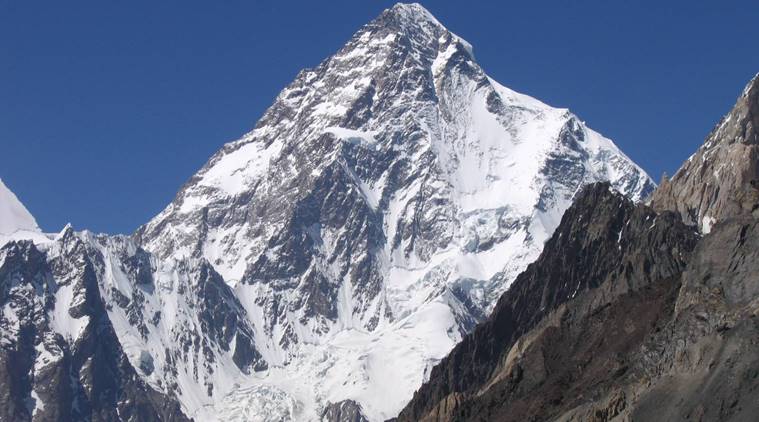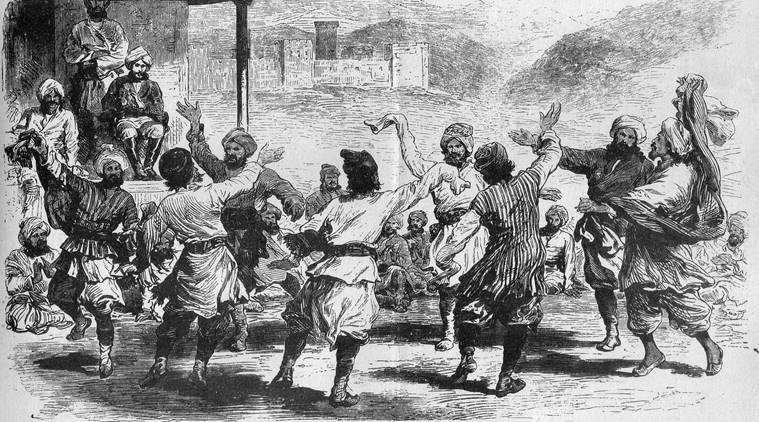The British parliament on March 23 passed a motion condemning Pakistan’s announcement declaring Gilgit-Baltistan as its fifth frontier. The motion headed by British Conservative leader Bob Blackman stated that Gilgit-Baltistan, being part of the state of Jammu and Kashmir, has been illegally occupied by Pakistan, denying the people of the region basic fundamental rights.

A brief outline of the history of Gilgit Baltistan, erstwhile also known as the Northern Areas would put into context the process by which the northernmost territory of Pakistan came to acquire a status of ambivalence.
Becoming a part of Jammu and Kashmir- 1846
Story continues below this ad
Ethnically speaking, Gilgit Baltistan can be considered to be closer to the tribes of Central Asia than that of India. However, in 1842, on account of a conquest made by the Dogra commander Wasir Lakhpat, the region came to be ruled by Sikhs and the Dogras. After the defeat of the Sikhs in the Anglo-Sikh war of 1846, Gilgit-Baltistan was made part of the princely state of Jammu and Kashmir, though it still remained under Dogra rule.
 Ethnically speaking, Gilgit Baltistan can be considered to be closer to the tribes of Central Asia than that of India. (Source: Wikimedia Commons)
Ethnically speaking, Gilgit Baltistan can be considered to be closer to the tribes of Central Asia than that of India. (Source: Wikimedia Commons)
British governance in Gilgit Baltistan- 1935
In 1935, the British leased the territory of Gilgit Baltistan on account of its strategic location in the northern borders of India. While the administration of the region remained in the hands of a British officer stationed in Delhi, security in the region was made the responsibility of the Gilgit Scouts, also comprising the British.
Once India acquired independence in 1947, the British handed over the territory back to the Maharaja of Jammu and Kashmir. Maharaja Hari Singh appointed Brigadier Ghansar Singh as the governor of Gilgit-Baltistan and Gilgit Scout officers Major W A Brown and Captain A S Mathieson were also put in charge.
Story continues below this ad
When after partition, the princely states of the country were given a choice to join either India or Pakistan, Maharaja Hari Singh of J&K acceded to India. Soon after the locals of Gilgit-Baltistan rebelled and Major Brown imprisoned Brigadier Ghansara Singh. On November 2, 1947 he hoisted the Pakistani flag at his headquarters and declared that Gilgit was joining Pakistan. Soon after, the Pakistani army and tribals occupied the region and used it as a base to carry out attacks in nearby regions.
Pakistan administration in Gilgit Baltistan- 1947
On November 16, 1947 Gilgit Baltistan came under de facto control of the Pakistani government, though the nature of its administration has been rather loose and alterable over time. Unlike the region known as ‘Azad Kashmir’ that is located to its south, Gilgit Baltistan was not given a separate constitution, but was arbitrarily governed by Pakistan. In 1975, under the prime ministership of Zulfikar Ali Bhutto, the territory was given an advisory council and in 1999 under orders from the Supreme Court, a change in administration was enacted in which the Advisory Council was renamed as Northern Areas Legislative Council. The demand for a politically empowered body has been consistently denied to the territory.
In 2009, the Gilgit-Baltistan (Empowerment and Self-Governance) Order was announced replacing the Northern Areas Legislative Council with the Legislative Assembly. However, the reforms package was seen as unsatisfactory both by the people of the territory and as Indians who saw the autonomy invested in the reforms as illusory as best.
Using the phrase ‘interstate colonialism’ to describe Pakistan’s administration in Gilgit Baltistan, Navnita Chadha Bahera says Pakistan has all administrative rights in the regions, whereas the people of the region have no individual rights. While on the one hand the people of Gilgit Baltistan are compelled to pay all taxes, they acquire no benefits from the government of any socio-economic policies. As per Bahera, the Pakistan government has employed non local ruling elites in the region consisting of Punjabi-Pashtun bureaucrats and military personnel. Further, she explains that the government has been using the classic colonial method of ‘divide and rule’ to create divisions between Shias and Sunnis so as to curtail demands for rights among them.
Story continues below this ad
Also read: Gilgit-Baltistan: Alienation is an issue, but no connect to India
For the people of Gilgit-Baltistan, on the other hand, feelings towards Pakistan are quite divided. In June 2015, Nirupama Subramanian wrote that there are three broad political sentiments prevalent in Gilgit-Baltistan. “the most vociferous is for merger with Pakistan, and the next loudest demand is for merger with “Azad” Kashmir. In recent years, a demand for independence from Pakistan has grown as well. Whatever New Delhi might think, G-Bs feel no political connect with India,” says Subramanian. She goes on to explain that the people of Gilgit-Baltistan, largely feel no connect with Kashmiris, and would not want their fate to be linked with them. As she notes, people of the region speak a host of languages and not one of them is Kashmiri.

 Situated on the northwestern corner of Jammu and Kashmir, Gilgit Baltistan was erstwhile a part of the princely state of Jammu and Kashmir. (Source: Wikimedia Commons)
Situated on the northwestern corner of Jammu and Kashmir, Gilgit Baltistan was erstwhile a part of the princely state of Jammu and Kashmir. (Source: Wikimedia Commons)
 Ethnically speaking, Gilgit Baltistan can be considered to be closer to the tribes of Central Asia than that of India. (Source: Wikimedia Commons)
Ethnically speaking, Gilgit Baltistan can be considered to be closer to the tribes of Central Asia than that of India. (Source: Wikimedia Commons)





























